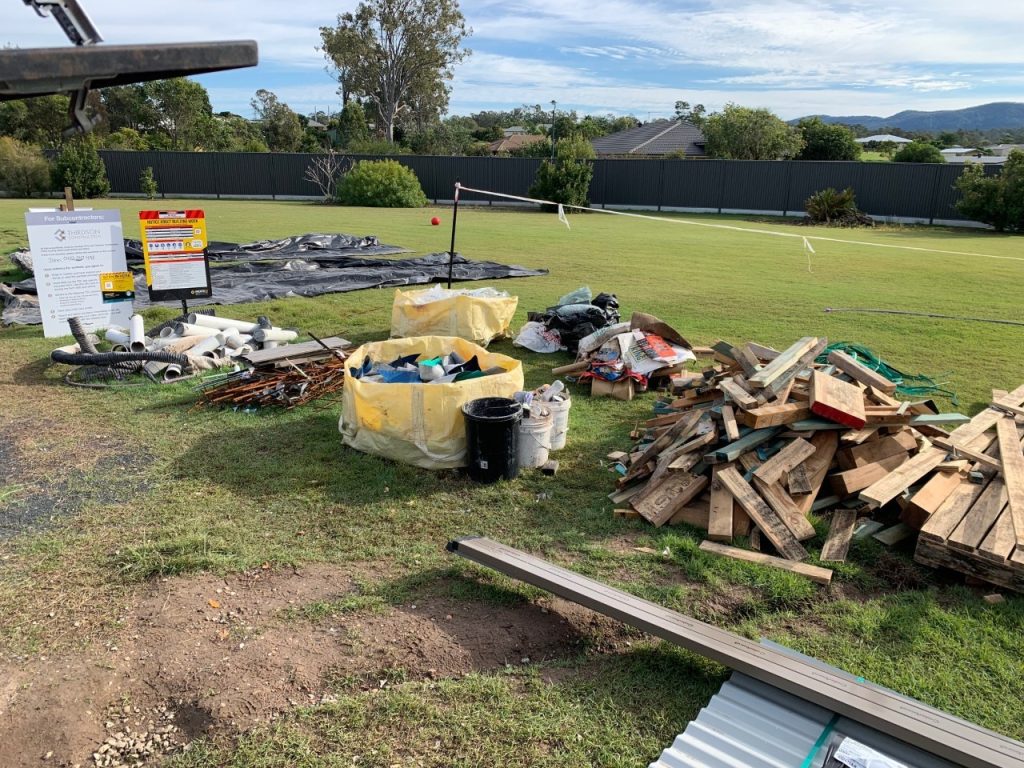How we saved 62% of our construction waste from landfill
Designer: 4305 Design
Builder: Thirdson Construction
Project: New Build 110m2
Project Scope
This little shelter is grounded firmly in the landscape. Superbly energy efficient (9.1 stars!), the home celebrates the subtropical lifestyle, collects winter sun in all the right places, and is packed with accessible features.
Material selection, energy efficient construction methods, low VOC products and reducing landfill were critical during construction to reduce this dwellings impact on the environment.
It’s the combination of sustainable design and sustainable construction that makes this project truly unique.
How we reduce waste...
Our teams work directly with suppliers, waste contractors and tradespeople in three areas:
- Specifying packaging when optional: Prior to ordering materials from merchants, we specify if they need wrapping or all the usual unnecessary packaging depending on site conditions at the time.
- Separating Waste: Additional skip bins and bulky bags are supplied onsite labelled for our trained team to separate waste streams that are recyclable.
- Recording Volumes: Learning and sharing is the aim of recording waste and our contribution to landfill. Volumes in M3 are calculated from bin sizes and bags taken from site to various recycling areas.
Project Findings
Typical of light weight timber, brick veneer with metal roofing, this build produced a total waste volume of approx. 16m3. We managed to divert 10m3 of waste away from landfill and back to remanufacture/recycling by separating our waste streams onsite, recording the data and arranging for separate collection and drop offs. Quantities are rounded to nearest cubic metre.
- Timber Waste 4m3
- Cardboard 3m3
- Concrete/Brick 4m3
- General Waste 6m3
- PVC 1m3
- Soft Plastics 1m3
- Strapping 1m3
- Steel – 2m3
- Soil Re-used onsite
- Plasterboard 1m3
PVC Pipe fittings and offcuts from plumber’s drains and stormwater. This consisted of 70% pipe offcuts and 30% fittings either damaged, replaced or glued incorrectly etc during install. These were sent to the construction waste recycling program for remanufacture in Brisbane.

Waste streams were separated into piles onsite and transferred into skip bins and bulky bags taken to recyclers or processing centres for re-use.
We were lucky to have the space on this site to do this case study, but it proves without a lot of extra effort the construction industry could reduce their contribution to landfill by up to 60% right away – Director David James
Our Values
We believe that:
- We need to change the way we build to take into account the limits of the natural environment in which in which we construct.
- Collaboration with professionals and policy makers within our industry to work towards improved environmental outcomes is the best way forward.
- Implementing on-site waste management and construction systems to reduce, reuse and recycle is crucial.
- Creating buildings of a superior quality and performance, to meet the challenges of a low carbon future is beneficial and necessary.

